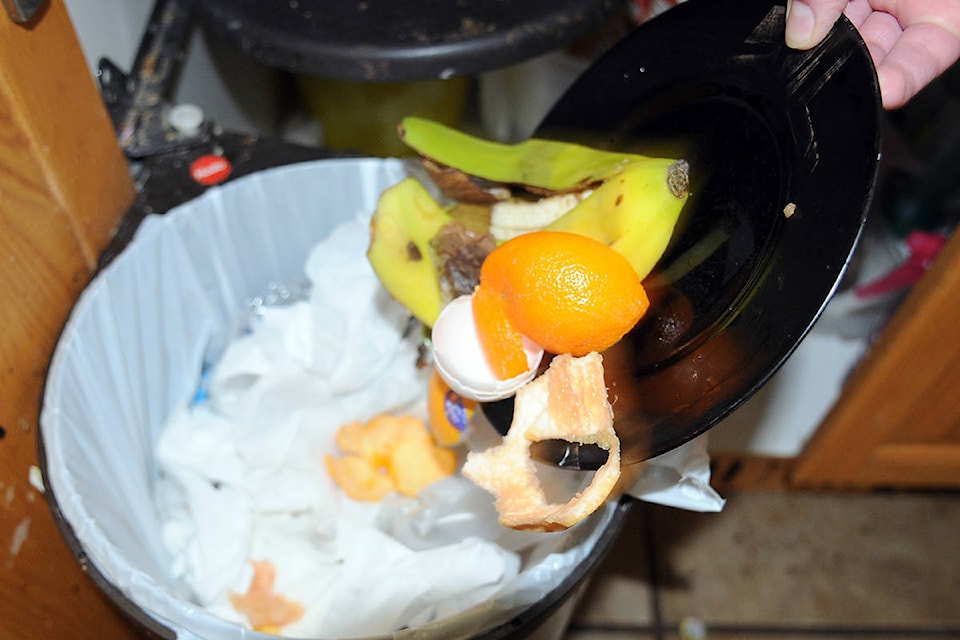The Regional District of the Central Okanagan is revisiting ways to handle household food waste.
In 2012, a feasibility study to collect and process food waste was conducted for the Central Okanagan, but it was determined that developing a food waste program was unlikely to provide benefits over the current waste program at the time.
The city currently captures bio-gas at the Glenmore Landfill from decomposing waste, which it sells as energy.
“However, the RDCO has included a commitment to re-evaluate organic waste diversion opportunities in the future while maintaining existing landfill gas collection infrastructure and commitments with Fortis for the sale of gas,” according to the final draft of the district’s Solid Waste Management Plan, which is still waiting for provincial approval.
READ MORE: It’s time to rethink food waste before it’s too late
Organic waste, comprised of food and yard waste, makes up seven per cent of the waste hauled to RDCO transfer stations by residents, according to the plan. However, 27 per cent of waste taken to the Glenmore Landfill by the institutional, commercial and the industrial sector is organic waste, which is the largest amount of waste collected in this sector. That category also covers multi-family buildings.
A new plan
One of the solid waste management plan’s goals is to re-evaluate organic waste diversification options while considering the need to maintain landfill gas collection. That includes options for businesses and multi-family units, as well as an organics curbside collection. The cost for the re-evaluation is $40,000 and the study, if approved, will take place over the next few years.
Cameron Baughen is the solid waste management co-ordinator for the Regional District of the Okanagan-Similkameen and is also known for his worm composters in the South Okanagan.
The Regional District of Okanagan Similkameen is currently working on providing its residents with a composting program, but a site for it has yet to be found.
Public consultation was held in 2017 as part of the 10-year project within the Okanagan-Similkameen for composting, but the biggest challenge has been to find a location for a large regional site, as one proposed in Penticton met with backlash of opposition, Baughen said.
RELATED: New campaign aims to tide food waste at home
Proposals for small compost sites to mix residential food waste with yard waste in Oliver, Summerland and Princeton have had positive feedback, so an option may be to start with smaller sites. The lowest estimate for composting at the district level is $25 million, he said.
The RDOS is also in the process of applying to the province to have a bio-cover made of compost at Campbell Mountain Landfill, which would eliminate methane gas at the larger site.
“That way if we remove the food waste and cap it with this bio-cover made of food waste, which we found that compost that contains human waste is a lower value compost than condensed food waste, we could bring in food waste and condense this,” Baughen said.
Comparing compost
In Salmon Arm, curbside pickup for food waste is being implemented in the city, but private business owners slowly developed a compost site and were able to upscale themselves to meet the demand, he said. That’s something the RDOS is currently unable to do.
Salmon Arm’s site is also located away from people, something that is difficult to achieve in the Okanagan-Similkameen, he said.
“What we found in our area is that we need to be involved in the siting,” he said. “If we could have found a private sector group we would have worked with them, but we found location to be the most challenging because of the density of homes around the Okanagan-Similkameen.”
“We’ll be going back to our board next year, to discuss what we see.”
To make compost you have to use a lot of carbon dioxide, in the South Okanagan’s analysis there is a net win, but it’s not as big as you would think because of the amount of effort it takes to create that facility, he said.
“(The Central and South Okanagan) are in very different boats… we need food waste compost down here.”
Rae Stewart, waste reduction facilitator with the Regional District of the Central Okanagan, agrees, saying that recycling systems don’t always apply across the board.
Finding wrigglers
For those looking into composting, you can also purchase a worm composter from the RDOS, or make your own.
“It’s something you should try,” Baughen said. “And if you like it (great). If you don’t, give me back the worms.”
However, worms are like pets and you can’t overfeed them, he warned.
Baughen said he’s been working with schools to do worm composting.
“For us, it kind of connects all the dots because now we have a recycling program that connects all the dots,” he said. “If you want to try it for yourself, make sure to get the education for it.”
@carliberry_
carli.berry@kelownacapnews.com
Like us on Facebook and follow us on Twitter.
